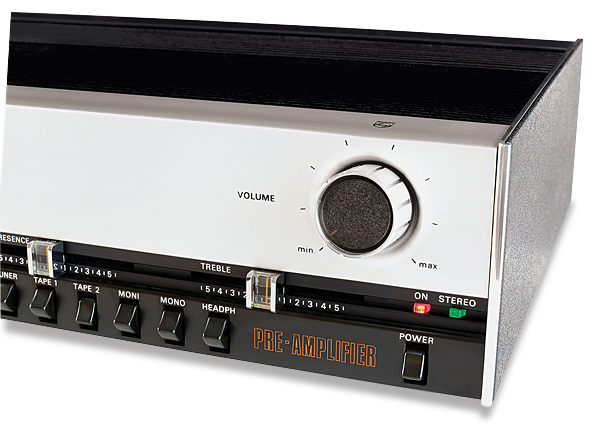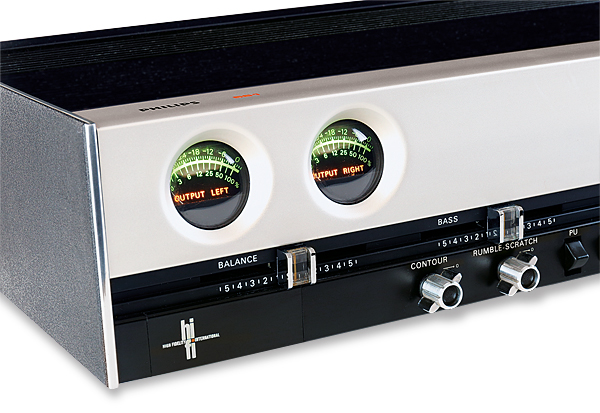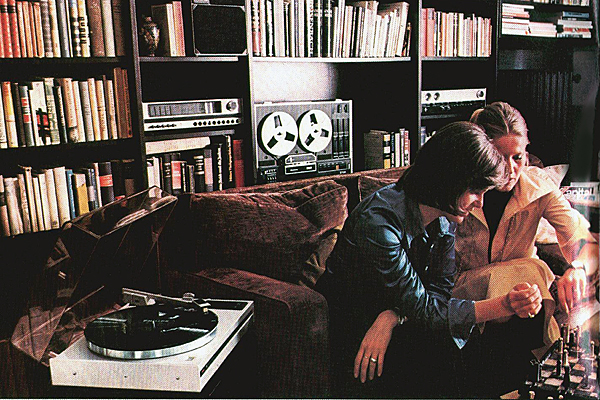Philips RH 551 Preamplifier

 An outlier in its day, this preamp was marketed as a match for products from rival brands yet its real purpose was to drive the company's MFB speakers. We fire it up...
An outlier in its day, this preamp was marketed as a match for products from rival brands yet its real purpose was to drive the company's MFB speakers. We fire it up...
The Philips Motional Feedback loudspeaker was one of the great advances in audio technology. Launched in 1975, the series would eventually encompass four distinct generations and remain in production for over a decade, its key technologies jealously guarded by Philips patents [HFN Jul '13]. However, the partnering equipment designed to help these speakers perform at their best is less well known, arguably due to Philips endorsing the use of third-party sources and amplifiers.
Purpose Driven
Nevertheless, an attempt was made to market a top-flight suite of complementary components, and at its heart lay a product not regularly seen in the catalogue of a household brand at the time: a separate preamplifier. This was the RH 551, which was introduced in 1976.
Compact transistorised circuitry had made standalone preamps relatively unusual come the mid 1970s because it was easy to construct integrated amps that offered excellent performance in compact packages. However, the MFB loudspeaker already housed its own power amps and so for optimum sound quality a purpose-designed preamp was deemed necessary.
The design of the RH 551 was based around the drive requirements of the RH 532 MFB speaker, the first and only model in production at the time. This offered three levels of sensitivity, two of which were intended for direct connection to the loudspeaker outputs of a conventional amp. The highest sensitivity setting was reserved for preamp outputs, but the input sensitivity was quoted as 1V into 3kohms.

The choice of input impedance is always a compromise with active loudspeakers, since long cable runs are usually involved. Without resorting to the complications of balanced operation, one either has to choose a low impedance which gives good noise immunity but requires care in the design of the driving amplifier, or a high impedance which is easy to drive but prone to pick up hum, spikes and other forms of interference. Philips chose the former option, thus making the RH 532 difficult to match with the few other specialist preamps available at the time.
Modular Thinking
The output stages of the RH 551 were akin to those of a small headphone amplifier, so much so that a headphone socket was provided which was driven directly from this point. These circuits were assembled onto a small plug-in module, the same as could be found doubled-up in the company's RH 832 quadraphonic music centre. The rest of the design closely followed that of the equivalent Philips integrated amplifiers of the day. In fact the cabinet, chassis and much of the low-level signal path was shared with the RH 521.

Taking Control
The RH 521 was a conventional 2x30W design, which was not very powerful even by the standards of the mid-'70s. The message from Philips was therefore clear – if you want top performance and bags of power then the only way to go is MFB.
To delineate the RH 551 from the rest of the range it was finished in a new livery: matt black replaced oiled teak for the top cover and this also adorned the lower part of the fascia, which had previously been silver in colour. A matching tuner, the RH 651, was also produced in black.
There are two philosophies that the designer of a preamp can follow. One is the pursuit of maximum simplicity – after all, one can easily obtain sufficient gain from a power amplifier to drive it directly from a line-level source such as a CD player and active circuits are only required if a phono stage is to be included. The resulting unit therefore emerges lean and stripped of all but the most basic facilities.
The other is to follow the layout of the old 'control unit' preamps of the valve days. As well as signal routing and volume regulation, sound-shaping devices such as filters and tone controls were also included, along with a good range of inputs of varying sensitivities to suit a host of different sources. This approach was favoured in the UK by Quad, as well as in Japan by all the big makers who liked to include as many knobs and buttons as possible on their top models. It was the layout chosen by Philips for the RH 551 too, making it a complex but highly versatile design.

Inputs were provided for a turntable equipped with an MM-type cartridge, a tuner, a dynamic stereo microphone and two tape recorders. All inputs were constructed to strict DIN standards which do not allow for a 'tape loop' type connection for off-tape monitoring. Since the Philips range included a number of three-head open-reel machines it was necessary to remedy this shortcoming by adding a 'monitor' input via an extra DIN socket, so enabling source/tape switching.
Bass, presence and treble controls were also present, as were switchable scratch and rumble filters and three choices of loudness contour. The RH 521's distinctive 'fish-eye' meters were retained, though now they showed overall system headroom rather than measured power output. Finally, a DIN-type headphone socket could be found hidden behind a small metal flap located to the left of the fascia.
Quality Option
The RH 551's key selling point disappeared when the RH 532 loudspeakers were replaced by the new RH 541, RH 544 [HFN Nov '16] and RH 545 models. These all had a more conventional input impedance and could be driven from a normal preamp, but Philips continued to offer the RH 551 as the quality option until around 1980. No further dedicated MFB preamps were designed although a pair of attractive MFB-only receivers were offered – the RH 743 and AH 762. Both were aimed at the 'lifestyle' end of the market, unlike the audiophile-oriented RH 551.
For those used to the later, typically more 'plastic' creations that came out of the Philips factories in the '80s, the RH 551 comes across as surprisingly solid and well made. Fit and finish are well up to Japanese standards while the controls feel precise and sturdy. The styling still has touches of Philips quirkiness (those meters…) but the way the unit operates is largely conventional.
Some features, such as the combined scratch/rumble filter switch, seem almost deliberately designed to confuse, but overall it feels like a sensible, considered product. DIN connections are used throughout, which means there isn't a high-level recording output (only DIN standard recorders can be accommodated), but the 'monitor' input proved to be a useful bonus.























































